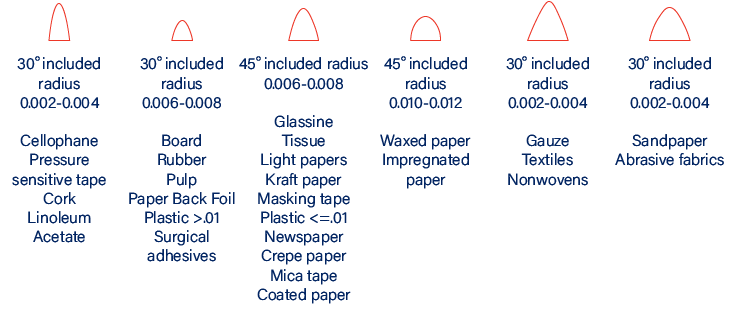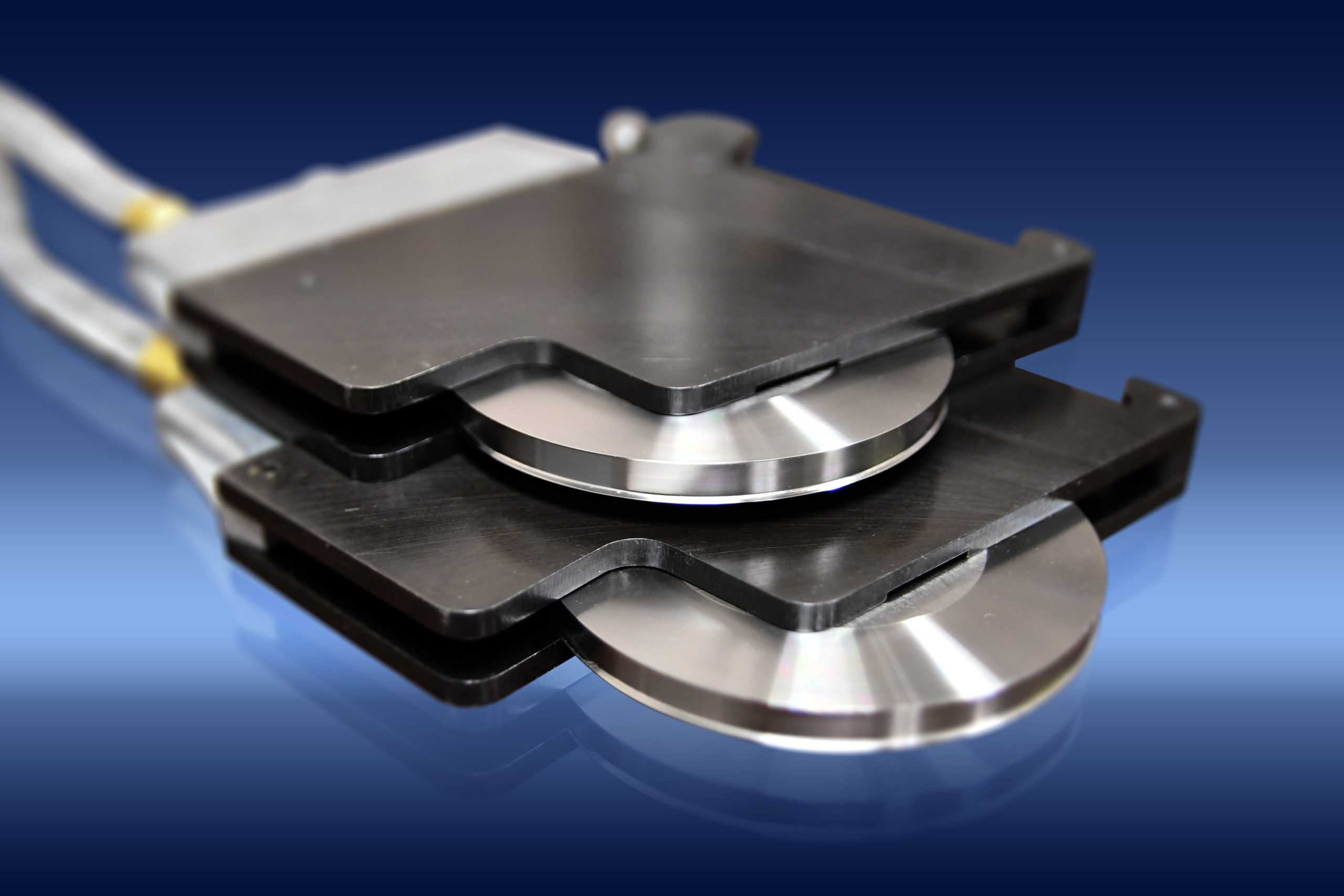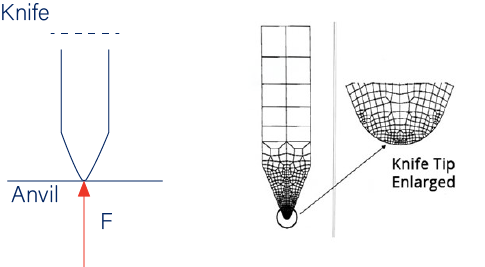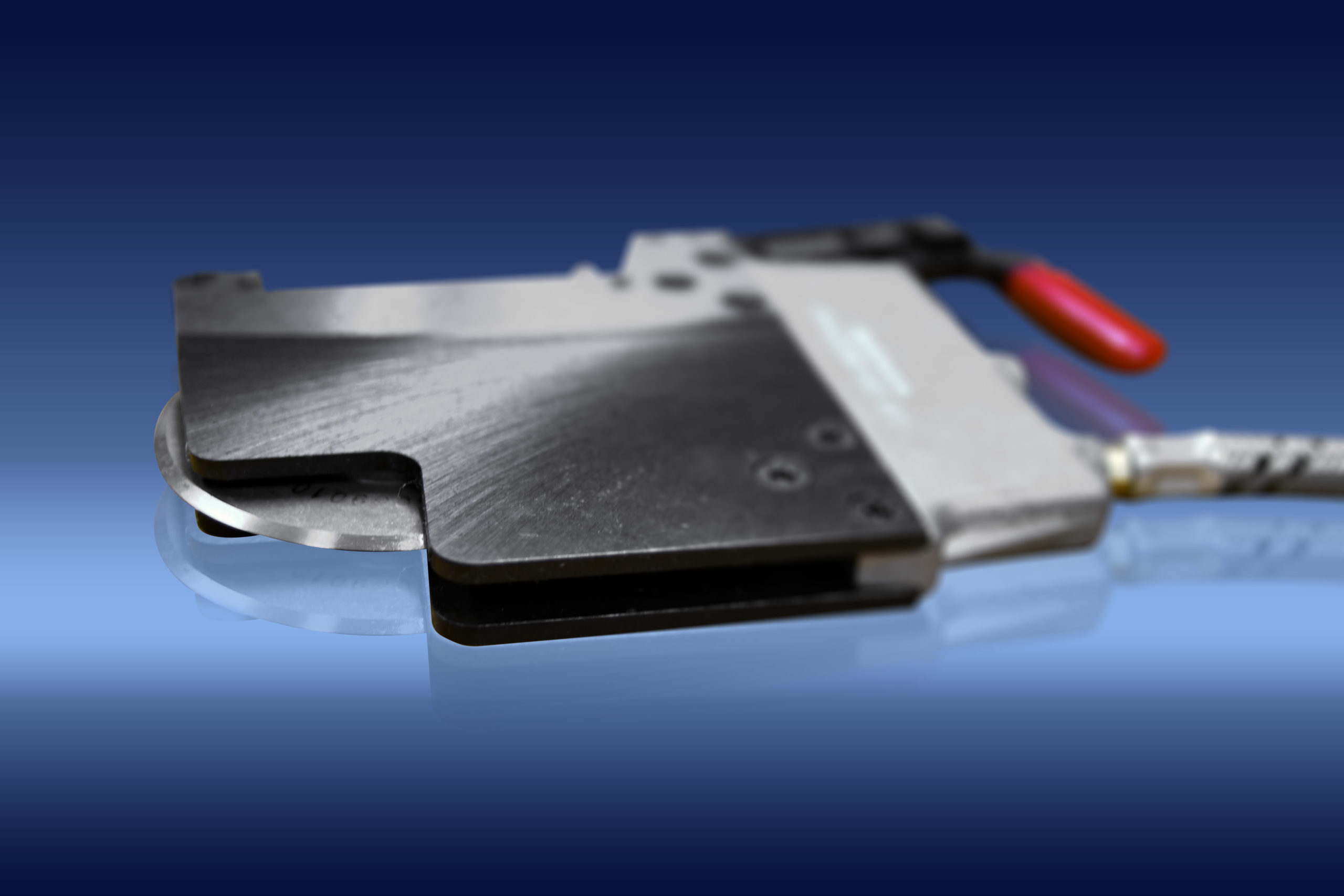Welcome to this new blog entry about choosing the right knife profile. Today we will be covering the selection criteria when selecting a blade for a crush cut application. In previous entries, we have discussed how the set-up parameters, as well as other factors, can and will affect the cutting-edge quality and the cleanliness of the operation.
But we have not gotten in-depth on what type of knife profile is best for each application.
In this entry, we will go over the different types of radii and bevel angles. Specifically, the ones available for crush cut blades and which type is suited best for certain applications.
Choosing the Right Knife Profile: Considering the Radius
First, let us remember that for most crush cut applications; the knives will not have a sharp edge. Alternatively, they will have a small radius. This will help the blade disperse the load created when pushing against the anvil roll. When the holder is engaged, the incoming web will be pinched at this radius, separating the material. The type of material dictates the desired angle and radius used on the knife’s tip. Below is an image showing this concept.
As a result, there will always be a trade-off. Specifically, between cutting edge quality and the combination of the bevel angle and radius. Meaning, that a knife with a wider bevel angle and a larger radius will likely have a greater life than a narrower profile and a smaller radius.
However, this also means that cutting-edge quality will be worse. Resulting in more strings or “hairs” of material present than with a narrower blade and smaller radius.
Choosing the Narrower Blade
So why not always go with a narrower blade?
The answer is that the narrower the profile, the shorter the blade life will be. As a result, they will require a more frequent resharpening operation than a wider profile and bigger radius blade.
The sweet spot for any application is a combination of bevel angle and knife radius. Between the two, it should:
- Deliver an acceptable cutting-edge quality when using a new blade and when having a certain amount of material processed.
- The time between two resharpening processes is not so short that it directly affects the processing of the material.
Choosing the Right Knife Profile Based on Material
As a summary, below are some points to consider when choosing the right knife profile for your crush cut application. AND some of the blade radius and support angle trade-offs you would experience with different profiles and radius combinations:
- Increasing blade angle will provide more radius support with the poorer edge quality
- Increasing the radius will increase knife life but lessen the cut quality
- The smaller the radius, the less dust generated with a cleaner cut but less knife life
Here is a picture showing different radii, angles, and profiles recommended for each application:

Crush Cut Blade Radii
Starting Point for Choosing the Right Knife Profile
As previously mentioned, the most common crush blade sold today has a 0.004” -.006” (0.10mm – 0.15mm) radius with a 45-degree angle. For any new applications, this would be a good starting point.
Empirical analysis can confirm which specific blade is best for each application.
For example, if a knife’s life is too short, then you should consider a larger radius or support angle. It is important to note that every material is different; even among similar materials, the composition, thickness, and base will all vary.
However, we hope that with the information provided, you will have a better reference as to which blade type is best for your application.
The Right Knife Profile Based on Chrome Content
There is one more important aspect to mention in this blog entry. Sometimes due to the composition of the material being slit, you may desire a blade with a higher chrome content.
Most score cutting blades in the industry are AISI 52100 steel. However, some applications require a knife made of AISI D2 material instead.
A knife made from D2 steel will have a higher chrome content. This makes it more resistant to wear than a knife made from 52100 steel. However, D2 blades are more expensive than 52100 blades. So, this might be something to consider while selecting the blade for your application.
Choosing the Right Knife Profile Conclusion
Are you still unsure about choosing the right knife profile, even after reading this article? But you still want to find the best combination of bevel angle and radius that will best suit your slitting process? Do not hesitate to call our line of experts today! We will help you in any way we can!
Follow us on LinkedIn or Facebook for similar articles like this one!




